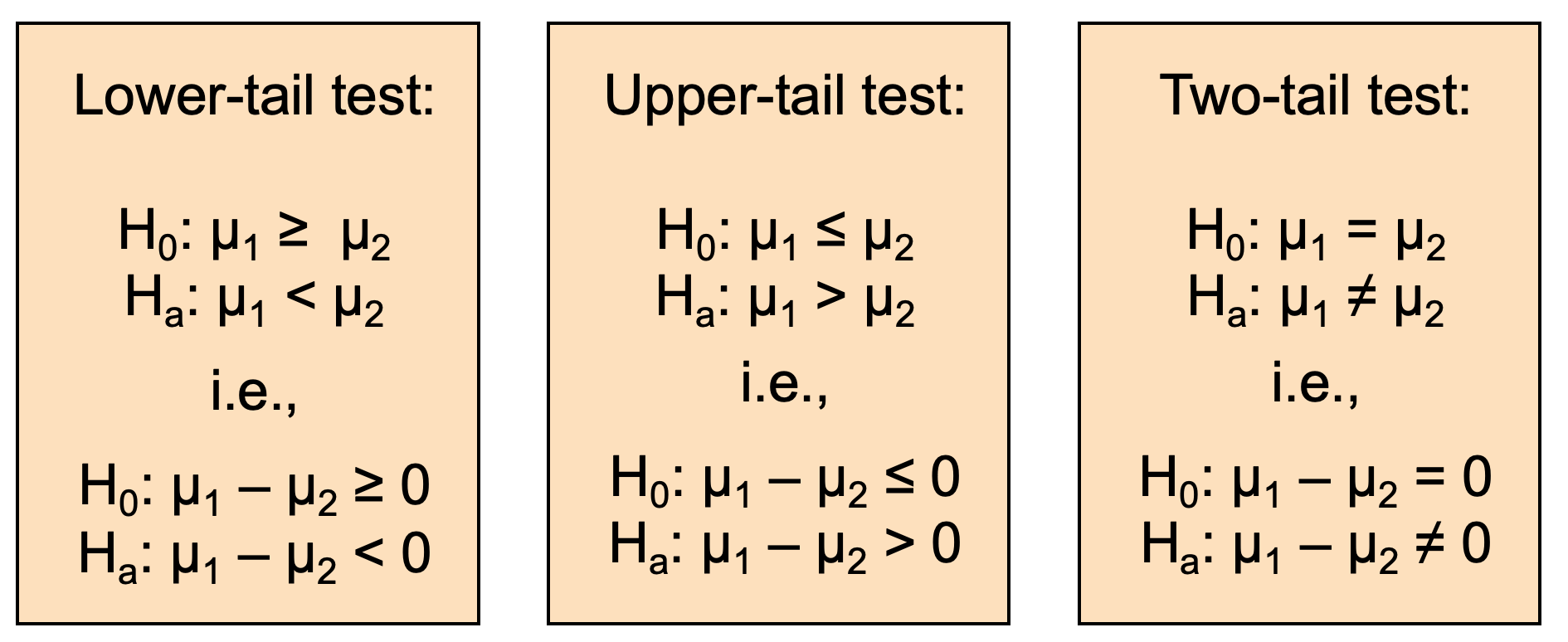date: 2023-12-30
title: Hypothesis-Testing-Two-Population
status: DONE
author:
- AllenYGY
tags:
- Hypothesis-Testing
- Lec4
- NOTE
- ProbabilityStatics
created: 2023-12-31T17:35
updated: 2024-04-08T20:13
publish: TrueHypothesis-Testing-Two-Population
Two Sample Tests
- Population Means, Independent Samples
- Population 1 vs independent Population 2
- Population Means, Related Samples
- Same population before vs after treatment
- Population Proportions
- Proportion 1 vs Proportion 2
Independent Samples
Use the difference between 2 sample means
The Point estimate for the difference is

Test statistic is a z statistic
The standard error of
The test statistic for
The confidence interval
Test statistic is a t statistic with (n1 + n2 – 2) degrees of freedom
The population variances are assumed equal, so use the two sample variances and pool them to estimate the common
The test statistic for
The confidence interval
Samples are randomly and independently drawn
Populations are normally distributed or both sample sizes are at least 30
The population variances are not assumed equal, so include the two sample variances in the computation of the t-test statistic
The test statistic is a t statistic with
The number of degrees of freedom is the integer portion of:
The test statistic for
The confidence interval
Related Samples
Dependent samples are samples that are paired or related in some fashion.
Paired T-test
Paired (matched)-Sample T Test, the test statistic for
The confidence interval for
Two Population Proportions
The point estimate for the difference is
Mean:
Standard deviation:
if
if
The test statistic for
The confidence interval for
Summary
Compared two independent samples
- Performed Z test for the difference in two means
- Performed pooled variance t-test for the difference in two means
- Performed separate-variance t-test for difference in two means
- Formed confidence intervals for the difference between two means
Compared two related samples (paired samples)
- Performed paired t-tests for the mean difference
- Formed confidence intervals for the mean difference
Compared two population proportions
- Formed confidence intervals for the difference between two population proportions
- Performed Z-test for two population proportions